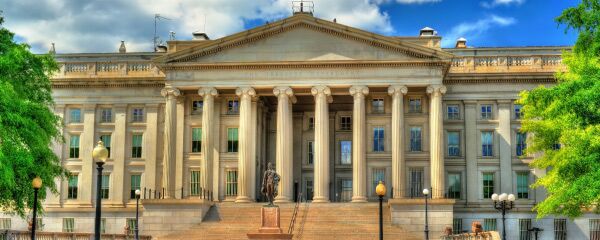In 1971, President Richard Nixon told an ABC News reporter that he was "now a Keynesian in economics."
Nixon’s statement was an acknowledgment that he agreed with the ideas of John Maynard Keynes. Keynes was an economist whose theories once underpinned the economies of every major country.
Nixon’s endorsement of Keynesian economics was shocking. To understand its impact at the time, consider how the world would react today if the leader of ISIS converted to Christianity. Or if the National Rifle Association endorsed a ban on semi-automatic weapons.
Free Wealth Protection Insights
Enter your email below to receive our weekly briefings on better ways to preserve your wealth, legally reduce your tax bill, and better protect what you’ve worked hard to build.
The Nestmann Group does not sell, rent or otherwise share your private details with third parties. Learn more about our privacy policy here.
PLEASE NOTE: This e-series will be delivered to you via email. You should receive your first message minutes after joining us. By signing up for this course, you’ll also start to receive our popular weekly publication, Nestmann’s Notes. If you don’t want to receive that, simply email or click the unsubscribe link found in every message.
Nixon’s statement was astonishing because one of the fundamental precepts of Keynesian economics is that governments must intervene in the economy to ensure “optimal outcomes.” To economic conservatives, this was dangerously close to socialism or even communism.
Keynes believed that business cycles – periods of expansion followed by recessions – are the inevitable consequence of capitalism. Free-market economists believe governments should not intervene in the business cycle support economies in recession. Keynes thought intervention was a fundamental duty of government.
During the Great Depression of the 1930s, Keynes advocated for governments to reduce taxes and increase public spending to spur employment. Keynes acknowledged that this policy might require deficit spending. But he believed budget surpluses when prosperity returned would make up for the deficits.
Once Nixon embraced Keynesianism, resistance by economic conservatives – and the Republican Party – faltered. The last Republican president who didn’t endorse Keynesian economics was Dwight Eisenhower, who left office in 1961. Ronald Reagan, George Bush Sr., George Bush Jr., and now Donald Trump have all embraced cutting taxes to spur the economy.
That brings us to 2018. February 15, 2018, to be exact. That’s the day that Treasury Secretary Steven T. Mnuchin signed off on a report with the mind-numbing title Fiscal Year 2017 Financial Report of the United States Government.
The message from the Secretary indicates that happy days are here again. As the report states:
Unemployment is at its lowest level since February 2001, consumer and business confidence are at two-decade highs, and inflation is low and stable.
This statement and the fact that free-market loving, fiscally conservative Republicans are running the show in Washington suggests the US might actually have a budget surplus.
Only it doesn’t. The Results in Brief section includes this statement:
The Government deducts $3.4 trillion in tax and other revenues from its $4.5 trillion net cost (with some adjustments) to derive its fiscal year 2017 “bottom line” net operating cost of $1.2 trillion.
“Net operating cost” is functionally identical to “budget deficit.”
In other words, while the economy hums along at a record pace, the US budget deficit is increasing by $1.2 trillion annually. What’s more, the tax cuts recently enacted by Congress are expected to increase deficits by more than $100 billion annually.
This isn’t free-market economic thinking championed by economic conservatives who dismissed the ideas of Keynes as needlessly interventionist. Nor is it even Keynesian economics. After all, Keynes argued that governments should accumulate a surplus during times of prosperity.
It’s not popular to say, but the US is broke. Busted. Bankrupt. That becomes more apparent as we dig in further to the Treasury report. Here are some highlights from page 55:
-
Total assets of the US government: $3.48 trillion
-
Total liabilities of the US government: $23.89 trillion
-
Net financial position of the US government: -$20.42 trillion
The net financial position of -$20.42 trillion is about 1.1 trillion more than it was at the end of 2016.
This is in a time of near-record prosperity. What do you think will happen when the next recession hits and Keynesian economics demand more government spending?
Oh, and by the way, the -20.42 trillion does NOT include future liabilities to Medicare and social security recipients. That comes to another $49 trillion (page 58).
In reality, the picture is even worse. In 2015, Boston University Professor of Economics Laurence J. Kotlikoff calculated an incredible $210 trillion “fiscal gap.” Kotlikoff’s analysis looked at the Congressional Budget Office’s expenditure projections for unfunded mandates. These include Social Security, Medicare, and military and federal pensions. It then subtracts the projected tax revenue to arrive at $210 trillion.
Kotlikoff’s figures don’t include the cost of the wars Donald Trump or any future president might decide to start in the Middle East or elsewhere.
Where will the government get the money to pay these unfunded obligations? Professor Kotlikoff’s calculations indicate an immediate and permanent 58% increase in federal taxes would eliminate the fiscal gap.
The Social Security system is in far better fiscal shape than the US government. So was the city of Detroit prior to its bankruptcy. Kotlikoff suggests the Social Security system is “only” 33% underfinanced. And Detroit was forced into bankruptcy in 2013 with only 25% underfunding.
We can forget about an immediate and permanent 58% tax hike. That’s just not going to happen. Any politician who suggests it will be promptly booted out of office.
But resurrecting a 2013 proposal from the International Monetary Fund might be more acceptable. The proposal calls for a “one-off capital levy” of 10% or more of private savings. To avoid public opposition to this outright confiscation of personal property, the IMF advocates the levy occur on a weekend or holiday, with no advance warning.
Confiscation of your savings would be politically acceptable because 57% of Americans have $1,000 or less saved. The impact of a capital levy on these individuals would be minimal. It would be easy for a populist president to convince them that a capital levy on the “rich” was necessary. After all, it’s easy to support confiscating other people’s money.
But if you have substantial savings and want to keep it out of the clutches of the US government, you need to start thinking about alternatives. Consider offshore investments, holding gold in secure international private vaults, and owning after-tax assets outside the financial system. None of these assets are easy for a bankrupt government to grab.
Don’t say I didn’t warn you.













